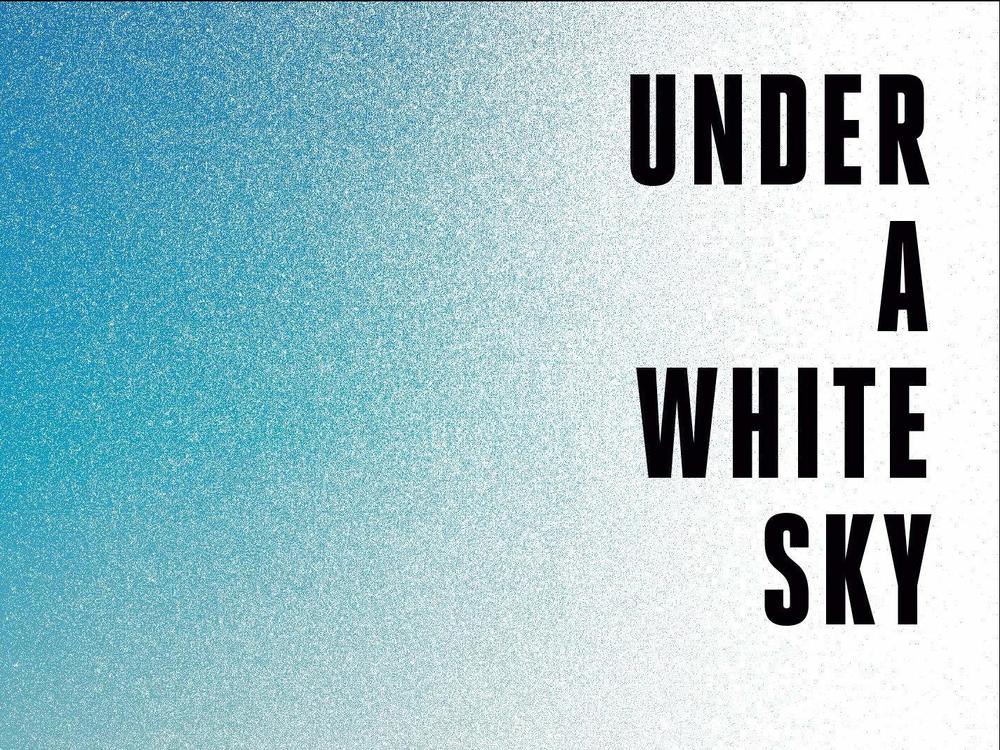Section Branding
Header Content
'Under A White Sky' Examines What It Might Take For Humans To Continue To Exist
Primary Content
What is the difference between a city and a wetland? How about a factory and a forest? What separates the environments that "nature" builds and the ones we humans build?
While this might have been an abstract question for philosophers at one point, it's not anymore. Decades into what is appropriately called "the climate crisis," humans are now facing down a planet that has been profoundly changed by our collective activities. In our struggle to find a response, and hopefully save ourselves, the relationship between humans and nature is being reconstructed.
That ongoing reconstruction is the focus of Elizabeth Kolbert's new book Under A White Sky: The Nature of the Future. And, as she shows us, it's a project that's neither clear, clean or certain.
Kolbert is well-known as the best-selling author of The Sixth Extinction. Her reporting brought the ongoing mass-extinction event that we're inadvertently causing now from talk in scientific literature to common knowledge. In this new book, Kolbert once again looks down the barrel of the Anthropocene, the new geologic epoch where human activity represents the most powerful force shaping the machinery of Earth's planetary evolution. Early in the book, Kolbert lists the startling facts of this new Anthropocene Earth:
"People have, by now, directly transformed more than half the ice-free land on earth — some twenty-seven million square miles — and indirectly half of what remains. We have dammed or diverted most of the world's major rivers. Our fertilizer plants and legume crops fix more nitrogen than all terrestrial ecosystems combined, and our planes, cars, and power stations emit about a hundred times more carbon dioxide than volcanoes do. ...humans and livestock outweigh all vertebrates combined, with the exception of fish. In the age of man, there is nowhere to go, and this includes the deepest trenches of the oceans and the middle of the Antarctic ice sheet, that does not already bear our Friday-like footprints."
The consequence of the extraordinary power we're exerting on the Earth is that the planet is changing. It's sliding out of the state we found it in 10,000 years ago when the last ice age ended. But this new planet seems like it's going to be a lot less hospitable to our "project of civilization" than the one we've started with. In response to this sobering fact, communities across the world are trying to shift from inadvertent impacts on the natural world to conscious and intentional control. Kolbert's book is, essentially, reporting from the front lines of these frenzied efforts.
Under A White Sky is broken into three parts. The first, Down The River, tells two stories: The first is the effort to manage and control fish populations associated with rivers in the Midwest. The story is really about the Chicago River but, as Kolbert takes pains to show, the big problem in managing the Anthropocene is that everything is connected to everything else. A species like silver carp introduced into an Arkansas pond may eventually find their way to taking over lakes in Illinois. In the second part of the section, Kolbert tells of the equally complicated effort to deal with the drowning of Louisiana's Mississippi River delta which, itself, is a consequence of the last century's vast effort to tame that same river. The second section of the book, Into The Wild, details the attempts to save species and ecosystems from our impacts — while the third, Up In The Air, tells the story of "geoengineering," where global warming is countered not by reducing fossil fuels but by literally rewiring the atmosphere. As Kolbert shows, the lurking, unintended consequences geoengineering can be pretty frightening. One plan to cool the planet by spraying tiny sunlight-reflecting particles high into the air would turn the sky from blue to white.
What unites Kolbert's reporting in all these stories is the sense of scale that comes with the problems we face targeting a reasonable outcome for our Anthropocene — a "good Anthropocene" as some call it. For more than a decade, I have been thinking about the Anthropocene from my astronomer's perspective; this means I see it from a 10,000-light-year view where it appears as planetary transition much like the other huge transformations Earth and its life have gone through before. What was so illuminating about Kolbert's writing was to see planetary transformation brought down to the human scale. Reaching a good Anthropocene, if such a thing exists, would only happen as a result of millions of people in millions of communities doing experiments. They will be trying millions of ways to alter, adjust and adjudicate the natural processes we already altered by mistake. With considerable humor, Kolbert shows us just how fraught that project will be.
What makes Under A White Sky so valuable and such a compelling read is Kolbert tells by showing. Without beating the reader over the head, she makes it clear how far we already are from a world of undisturbed, perfectly balanced nature — and how far we must still go to find a new balance for the planet's future that still has us humans in it.
Adam Frank is an astrophysics professor at the University of Rochester and author of Light of the Stars: Alien Worlds and the Fate of the Earth. You can find more from Adam here: @adamfrank4.
Copyright 2021 NPR. To see more, visit https://www.npr.org.
Bottom Content

